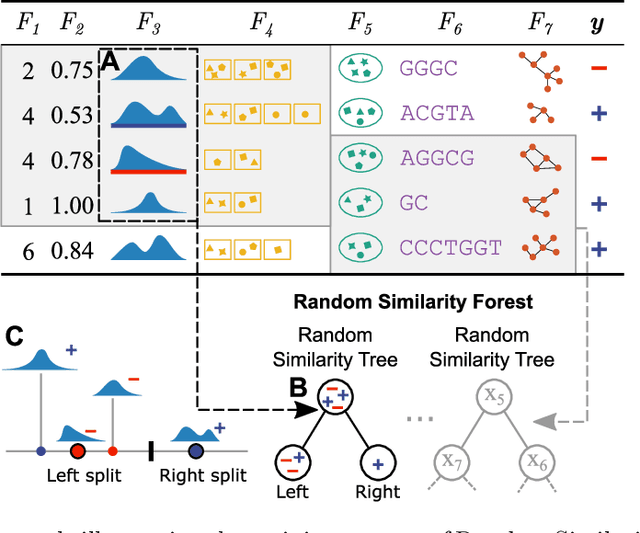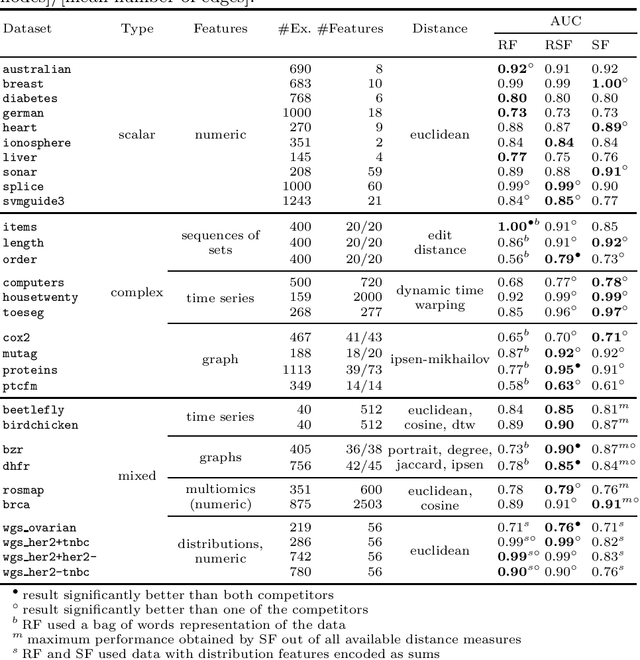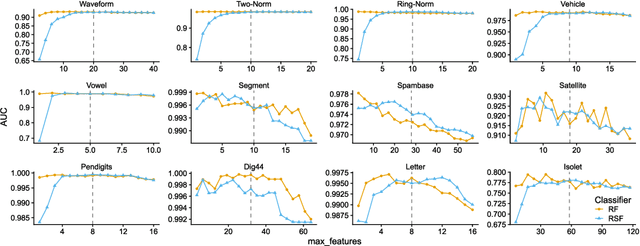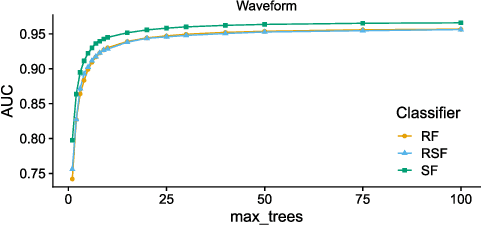Random Similarity Forests
Paper and Code
Apr 11, 2022



The wealth of data being gathered about humans and their surroundings drives new machine learning applications in various fields. Consequently, more and more often, classifiers are trained using not only numerical data but also complex data objects. For example, multi-omics analyses attempt to combine numerical descriptions with distributions, time series data, discrete sequences, and graphs. Such integration of data from different domains requires either omitting some of the data, creating separate models for different formats, or simplifying some of the data to adhere to a shared scale and format, all of which can hinder predictive performance. In this paper, we propose a classification method capable of handling datasets with features of arbitrary data types while retaining each feature's characteristic. The proposed algorithm, called Random Similarity Forest, uses multiple domain-specific distance measures to combine the predictive performance of Random Forests with the flexibility of Similarity Forests. We show that Random Similarity Forests are on par with Random Forests on numerical data and outperform them on datasets from complex or mixed data domains. Our results highlight the applicability of Random Similarity Forests to noisy, multi-source datasets that are becoming ubiquitous in high-impact life science projects.
 Add to Chrome
Add to Chrome Add to Firefox
Add to Firefox Add to Edge
Add to Edge